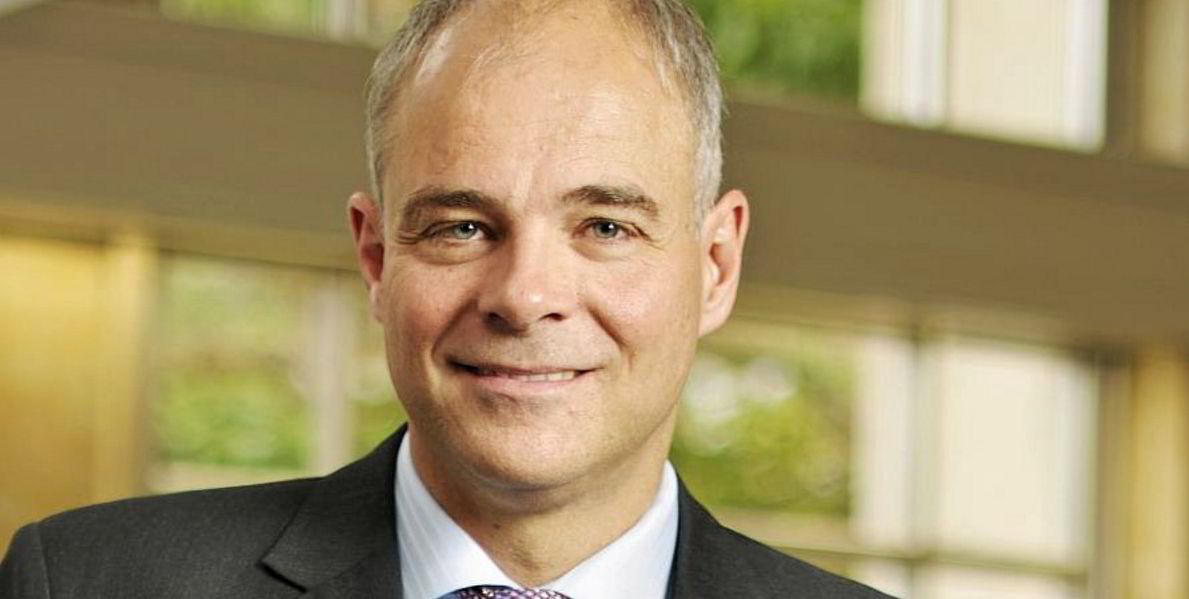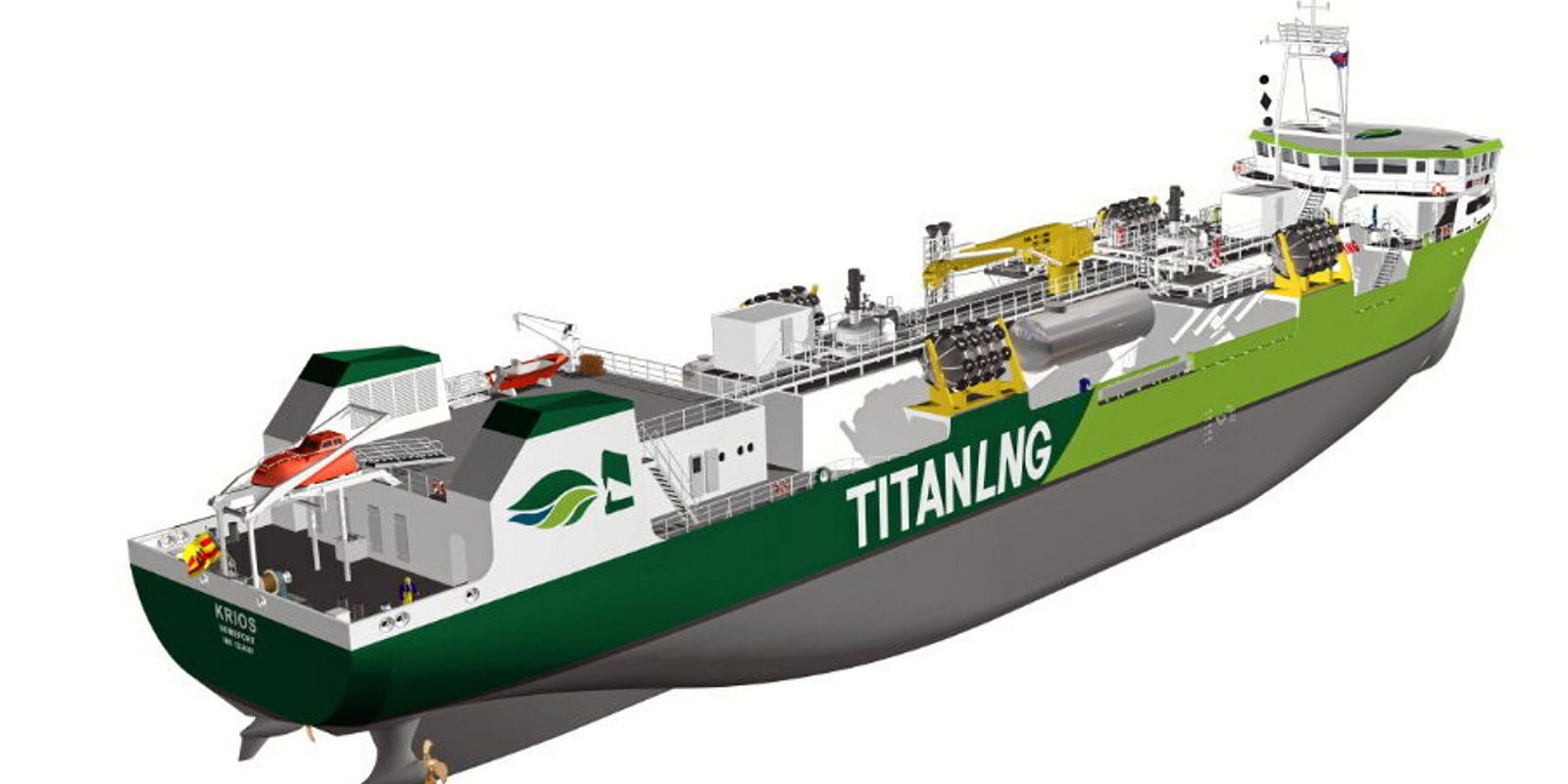Shipowners ordering vessels that will burn LNG as a fuel can future-proof their ships without needing to modify them, by transitioning first to CO2-neutral bio-LNG and ultimately to synthetic LNG (S-LNG).
That at least is the theory.
A few pioneers are already using physical bio-LNG, largely as a drop-in fuel for their LNG bunkers.
Others, such as Total, which supplied CMA CGM’s flagship dual-fuel containership, the 23,000-teu CMA CGM Jacques Saade (built 2020), have trialled a paper trade version, buying certificates of origin of bio-LNG to offset the carbon emissions of their bunkers.
Potential
The first stage of the transition from fossil LNG to bio-LNG is still embryonic. As with the first movers on LNG bunkering, the early adopters trialling bio-LNG for shipping have been largely concentrated in the Nordic countries.
Price and availability are issues. But those working with biogas say bio-LNG has the potential to be scaled up quickly to meet marine demand.
Biogas is nothing new. Residues sourced from plant, animal, household and industrial waste are taken into biogas plants, where the emissions they would have naturally released into the environment are captured.
Purifying biogas by removing CO2 and trace gases produces biomethane. This can then be injected into the gas grid, supplied direct as a fuel, or liquefied for supply in larger volumes to industries such as shipping.
Nordic energy company Gasum is investing heavily in biogas production and is adding liquefaction to its new plants.
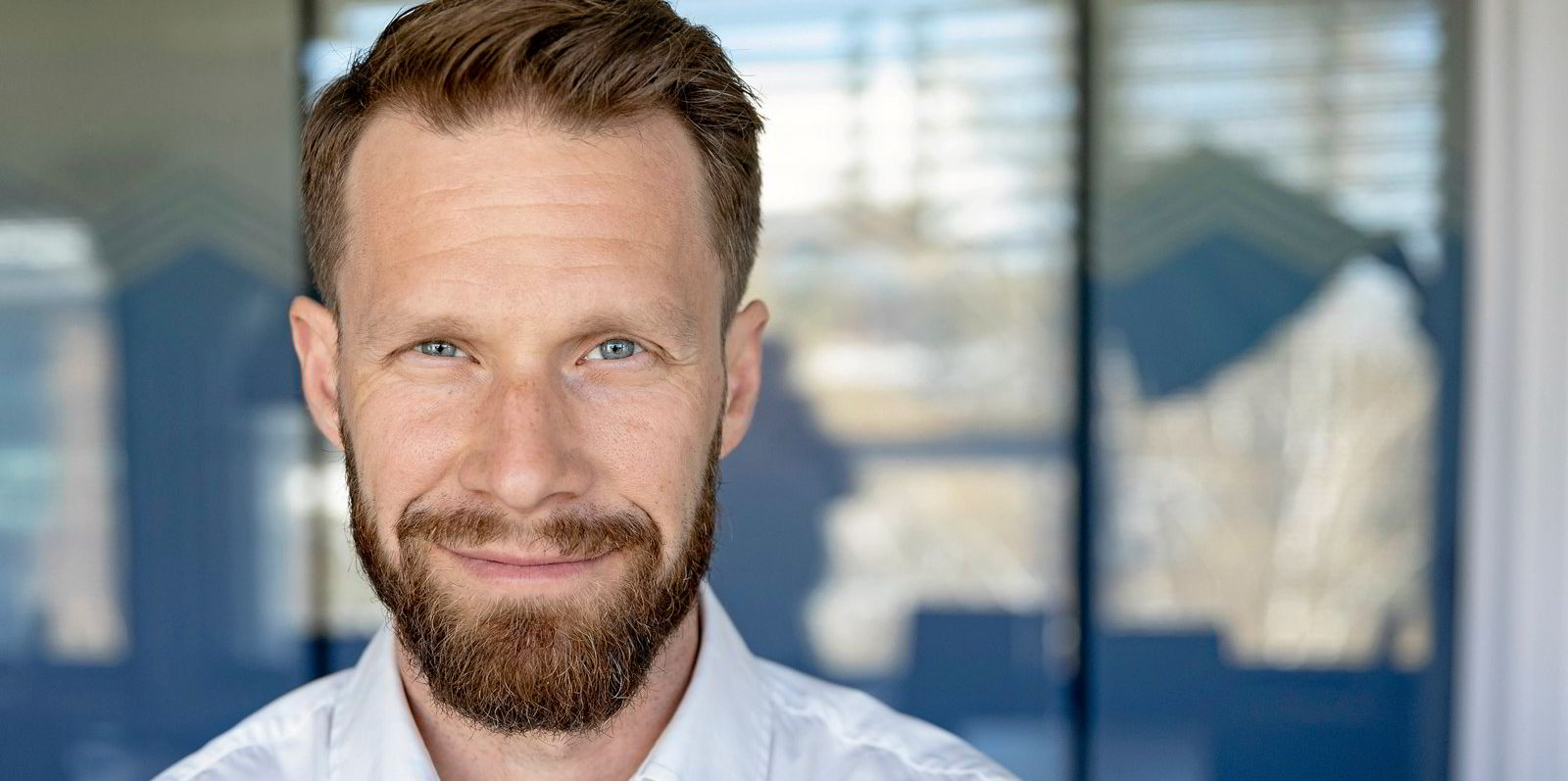
Its vice president of maritime, Jacob Granqvist, says biogas has traditionally been produced in small, scattered volumes close to the feedstock, such as on a farm. It has been used as compressed natural gas for vehicles or pushed straight into the grid.
Gasum has a current biogas portfolio of around 2TWh. It plans to double this in the next few years as demand increases, and expects to produce around 400GWh of what it prefers to call liquefied biogas this year.
Early mover
Dutch supplier Titan LNG is another early mover on the supply of physical bio-LNG for the marine sector.
Chief technical officer Ronald van Selm says streams of unconnected biomass in Europe that were previously used to produce green power could offer a big potential to boost bio-LNG production for the marine industry, where supply needs could be large.
Van Selm says Titan, which has already supplied bio-LNG volumes to vessels and is close to putting a long-term supply contract in place, plans to work with biogas producers to amalgamate volumes for liquefaction. In tandem, it will hook up with bio-LNG producers so it can get a mix of small- and large-scale production.
The energy majors are also investing. Shell and Total, which are championing the roll-out of LNG bunkering globally, have growing biogas portfolios, although they remain discreet about their plans.
In Germany, Shell is building a 100,000-tonne bio-LNG plant that will support the LNG road transport business. “We are exploring how to translate that type of concept to marine LNG,” it tells TW+.
Ideal drop-in fuel
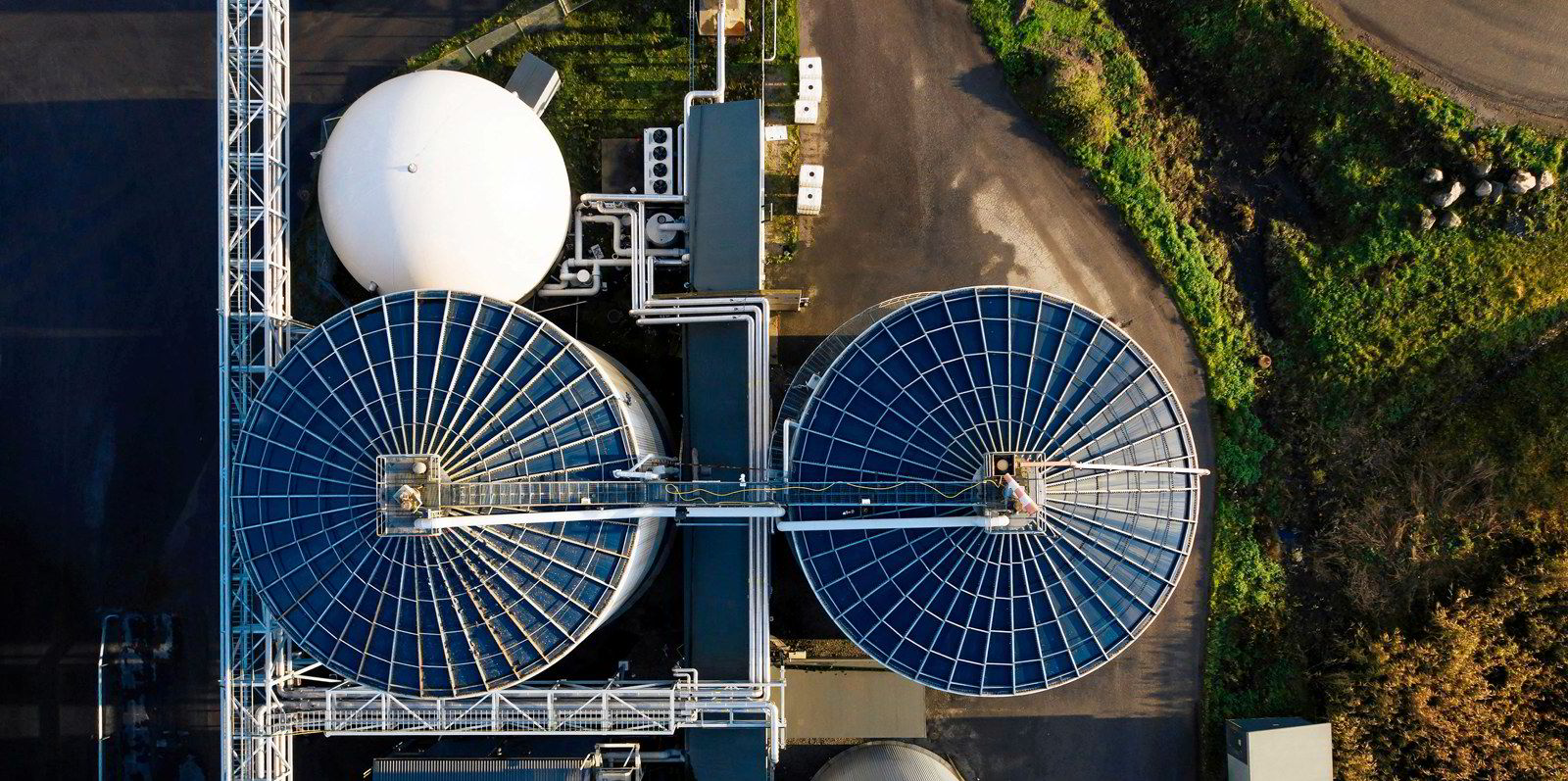
Shell is also paired with waste collector Renewi and technology developer Nordsol, which will open the Netherlands’ first bio-LNG plant in Amsterdam Westpoort within weeks.
In January, Total announced that it had bought French anaerobic digestion unit builder and operator Fonroche Biogaz. It is also working with PitPoint and Clean Energy in the Benelux countries and the US.
Total plans to produce 1.5TWh of biomethane per year by 2025 and boost this to 4TWh-6TWh by 2030.
Compelling
Rolf Stiefel, Bureau Veritas’ chief executive for central Europe, who has had a long focus on the LNG sector, says the compelling part for bio-LNG is that it does not require a huge industrial process, can be produced relatively quickly, uses existing infrastructure and is an ideal drop-in fuel for LNG.
Using bio-LNG as a drop-in fuel can cut emissions by up to 92% in the combustion cycle compared with fossil fuel-based LNG, and more if supply routes are decarbonised. The claim was made in a report, Bio-LNG in Transport, published last November by industry coalition SEA-LNG, the European Biogas Association, Gas Infrastructure Europe and the Natural & Bio Gas Vehicle Association.
They recommended the creation of a single market for biomethane and bio-LNG by allowing the trading of volumes and certificates across borders and technical and political barriers. They also want to see the bio dimension of LNG integrated into the revision in greenhouse gas reduction targets for shipping.
This allows charterers to request a certain volume of bio-LNG and pay more for it but reduce their CO2-equivalent emissions accordingly.
“None of the other CO2-neutral or -free fuels have this ability to be dropped in,” Stiefel says. “Bio is the immediate follower of fossil LNG and can be used as a drop-in as much as [it] becomes available.”
Hands on
Swedish ferry operator Destination Gotland has just begun using a 10% drop-in of bio-LNG to bunker its two LNG-fuelled ferries, the 1,650-passenger Visborg (built 2018) and Gotland (built 2019), which are bunkered by truck-to-ship in Nynashamn and ship-to-ship in Visby.
Chief executive Marcus Risberg says so far the experience has been “really good” and the company has “ambitious” long-term plans to reduce its greenhouse gas emissions and increase the blend of bio-LNG in its deliveries.
But everything comes down to price and supply. Risberg says bio-LNG costs around twice as much as LNG. And he stresses that it is important for his company to ensure the origins of the biogas it is using.
Destination Gotland buys a certified blend of bio-LNG from Gasum, with its supplier certifying the molecules.
Certifying physical biogas supply chains through the International Sustainability & Carbon Certification (ISCC) auditing system takes time to set up.
Van Selm explains that auditors act like accountants, checking and certifying the source of the waste used and its supply route. Titan LNG has hired specialists to get its ISCC in order.
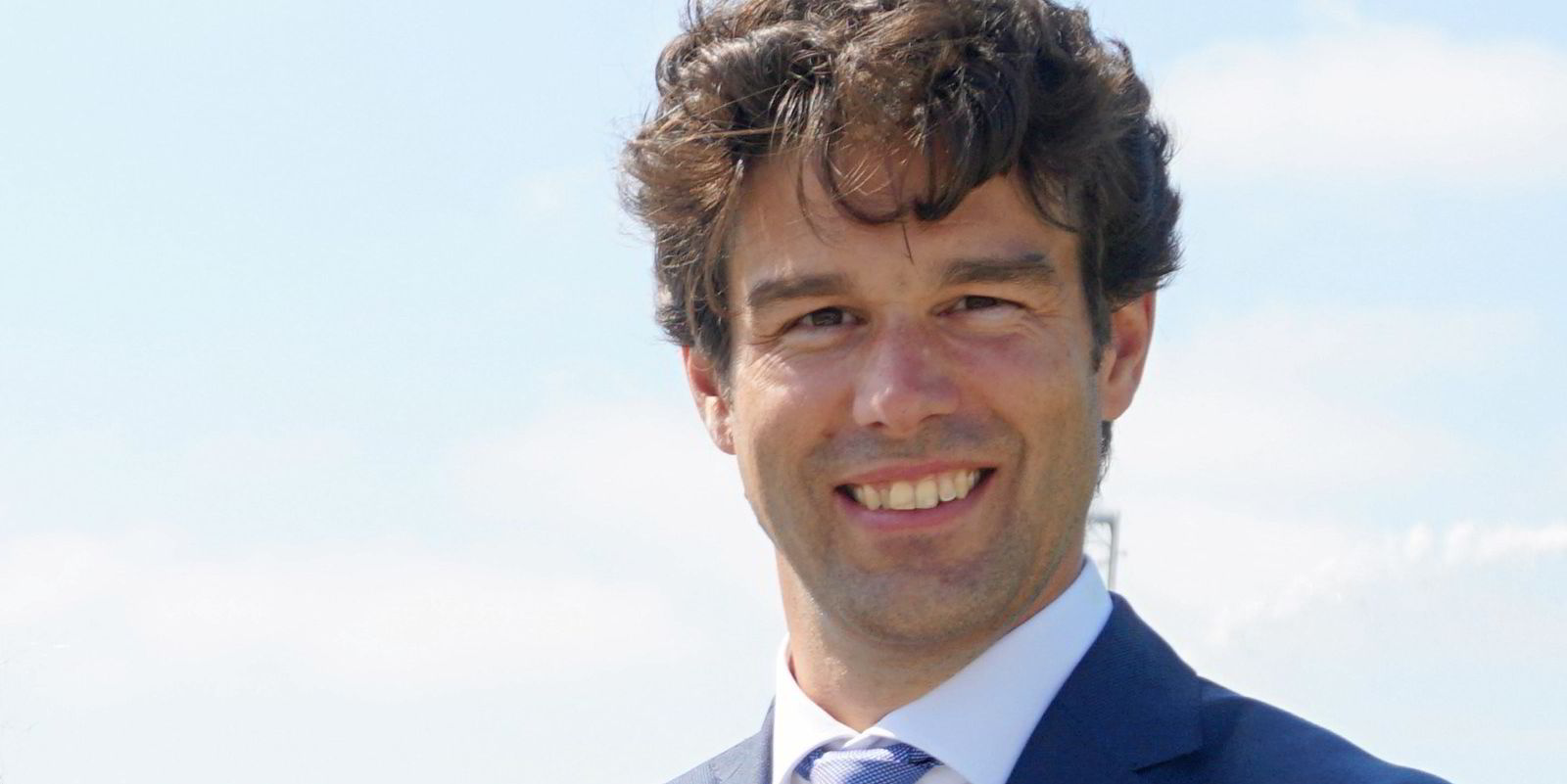
Physical versus certified
Granqvist says it is important to draw a distinction between the physical and certified supply of bio-LNG.
He believes the physical is important because it is easier to prove the sustainability of the whole chain.
Swedish shipowner Terntank has also been trialling physical bio-LNG.
Chief executive Claes Moller says current availability is limited and bio-LNG needs to be booked in advance to get the best price. “Otherwise, it is working perfectly.” The company expects to use more of it in the future and aims to use 100% bio-LNG eventually.
Although it is possible to boost supply by buying certificates, Terntank wants the physical product, which will take time.
“We will go the certificate route if that’s the only way, but we aim to have the real product,” Moller adds.
Risberg says if Destination Gotland can commit to certain volumes, it will be easier for suppliers to build up their production.
“For us, it is really important to be part of the whole supply chain and to work proactively with other actors in the industry to make sure that we have enough supply of the right type of biogas for the future.”
Van Selm says current bio-LNG production is still small; he estimates it at 20,000-40,000 tonnes a year. Marine users for the product will also be competing with the road transport sector, where regulations already make blending in bio-LNG attractive.
In contrast, the European Union’s emissions trading scheme (ETS) and the International Maritime Organization’s 2030 targets have yet to be firmed up.
Scale up
So how quickly can bio-LNG production be scaled up?

Van Selm says that on the current LNG-fuelled vessel orders, dropping in 5%-10% of bio-LNG will be “a challenge but achievable”.
He believes the percentage of bio-LNG used will be higher by 2030, to hit the IMO’s emissions target.
Ultimately, he sees ships running on 100% bio-LNG, with smaller ships able to do this post-2025.
Granqvist says Gasum is expecting a huge ramp-up of European biogas production. In theory, he says, its 300,000-tonne capacity LNG production plant at Risavika in southern Norway could purely focus on liquefying biogas.
“There is a lot more availability than there are off-takers in the shipping segment,” he adds. “It is all about the demand in the market. We are not liquefying as much biogas as we could. The shipowners need to find solutions which create value for their customers and incentivise them to pay a premium for decarbonising the cargo.”
To move this forward, Gasum offers to allocate bio-LNG in the exact quantity that will decarbonise any parcel of cargo, whether that is 100 containers or 500 passengers on a cruiseship.
Granqvist says this makes it easier for the shipowner to sell that added value to its customers and target those who are willing to pay that extra amount for decarbonisation.
Convinced
Van Selm says companies that have ordered LNG-fuelled tonnage are the most interested in testing with bio-LNG, so they can show their customers that they are taking concrete steps towards full decarbonisation.
He believes a large part of the extra cost will have to be paid for by the EU ETS: “Everyone in LNG bunkering understands that this [bio-LNG] is a necessary step, as LNG alone is not sufficient to bring us to the 2050 target.”
Van Selm says owners need to know they can use bio-LNG or S-LNG throughout a ship’s lifetime and declares himself “convinced” that this will be possible.
Granqvist says shipowners investing in newbuildings must know “LNG is not a dead end” and have a story that continues beyond the fossil phase of it.
But he says there is no need to consider supplying the whole shipping industry with bio-LNG, as it is a transition to the availability of synthetic fuels.

